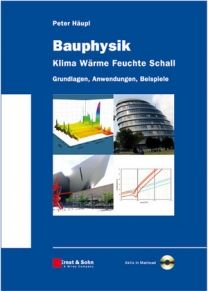Description
All relevant relationships of building physics are explained, not only those included in standards, for energy-efficient building and to reduce the effect on the climate as well as for optimal interior climate and to avoid damage to building elements.
About the author
Prof. Dr.-Ing. habil. Peter Häupl war von 1992 bis 2007 Inhaber der Professur für Bauphysik und von 1994 bis 2007 Leiter des Instituts für Bauklimatik an der Technischen Universität Dresden. Für das vorliegende Werkes bilden die Vorlesungen vor Ingenieurstudenten und die Ergebnisse vielfältiger Drittmittelforschungsprojekte die Basis.



